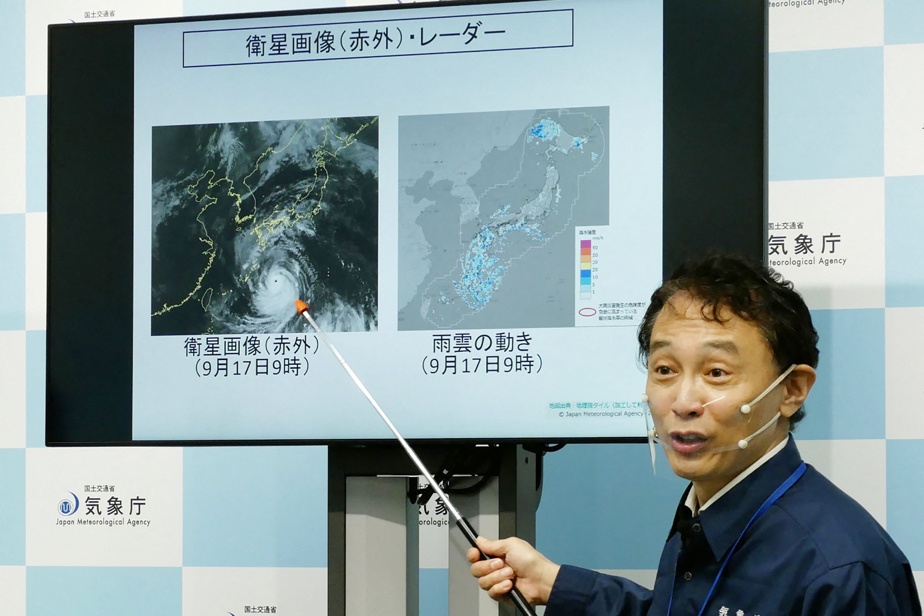(Minamata) Thousands of people took shelter in southwestern Japan on Sunday due to the powerful typhoon. Nanmadol He was heading toward the area, leading authorities to recommend the evacuation of more than four million residents.
Yuichi Yamazaki and Atesh Patel
France media agency
The Japan Meteorological Agency (JMA) has issued a “special warning” to Kagoshima and Miyaki prefectures in the south of the large island of Kyushu to warn residents of the high risk of severe weather.
As of Sunday morning, nearly 98,000 homes had been without power in Kagoshima, Miyazaki, Kumamoto and Nagasaki districts, while regional rail, flights and ferry services were canceled, according to utilities and local transportation services.
Some grocery stores, which are normally open 24 hours a day, including during severe weather, have also closed.
The JMA warned that the area could face an “unprecedented” danger from high winds, high waves and torrential rain.
“Please stay away from dangerous places and evacuate if you feel any danger,” Prime Minister Fumio Kishida wrote on Twitter after calling a ministerial meeting. “It would be dangerous to evacuate at night. Go to safety while it is still daylight.”
State broadcaster NHK said more than four million people on the island of Kyushu had received urgent recommendations to evacuate, and officials in Kagoshima and Miyazaki said more than 15,000 people were in shelters on Sunday afternoon.
“The greatest amount of caution is required,” said Ryota Korura, head of the forecasting unit at JMA, on Saturday. “It’s a very dangerous hurricane.”
“The winds will be so strong that some houses may collapse,” Korora told reporters, warning of floods and landslides.
Mr Korora urged residents to evacuate buildings before the worst happens and warned that even in solid buildings, they should take precautions.
“Don’t go near the windows”
“Please go to strong buildings before the strong winds start blowing and do not go near the windows, even inside strong buildings,” he said at a nightly press conference.
On Sunday morning, high-speed train traffic was suspended in the area, along with regional train lines, and NHK said it had reported hundreds of canceled flights.
On the ground, an official from the municipality of Izumi (Kagoshima Prefecture) said that weather conditions are rapidly deteriorating.
“The wind has become very strong. It’s also raining heavily,” he told AFP. “Visibility is almost non-existent.”
On the coast, in the city of Minamata, fishing boats, moored for safety, float on the high waves, while rain splashes on the promenade.
At 1 p.m. (4 a.m. GMT), the typhoon was over the small Japanese island of Yakushima and the winds were blowing at 234 km/h. It is expected to make landfall in Kyushu, in the north, on Sunday evening before turning northeast and sweeping over Japan’s main island of Honshu until Wednesday morning.
Typhoon season peaks from August to September in Japan when it is characterized by torrential rains that can cause flash floods and deadly landslides.
In 2019, Typhoon Hagibs It fell to Japan in the middle of the Rugby World Cup, causing more than a hundred deaths.
A year ago, Hurricane my pocket It led to the closure of Osaka’s Kansai Airport, killing 14 people.
And in 2018, floods and landslides killed more than 200 people in western Japan during the rainy season.
Scientists estimate that climate change is increasing the intensity of storms and extreme weather events.




